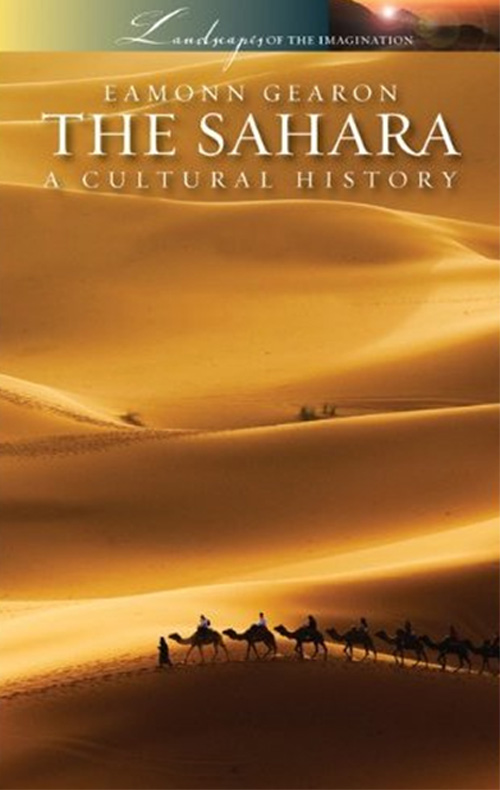The Sahara: A Cultural History
Review

The Sahara: A Cultural History, Eamonn Gearon, Signal Books, 2011, 264p, ISBN 978-1-904955-82-5, £12-00.
Eamonn Gearon has basically taken the whole of North Africa as his focus and yet this reads like the best of regional histories. Fortunately the text is supported by a very helpful map, to which I had to refer on countless occasions, so as to keep my own personal orientation, as I followed in Eamonn's steps across the vastness of the Sahara.
The Sahara embraces eleven countries and provides an interface between an Islamic north and a more Christian south, and the origins of the latter religious context are explained as the book proceeds. Eamonn takes a very broad canvas, in terms of geographical extent but also in terms of its earliest history. We are taken back to between 5,000 and 10,000 years ago in terms of archaeological evidence, including an introduction to the Sahara's unique rock art, which dates from before the Sahara began to develop the rather formidable atmosphere which it has exuded over the last three or four millennia, and indeed we are helped to understand the evidence that proves that there was once a well-watered green landscape.
We are taken on an historical journey through all the eras from before the Romans until the 19th Century during which the Sahara maintained its remote and inaccessible reputation, including an introduction as to why exactly Timbuktu was such an important, albeit remote, cultural centre nearly a thousand years ago, thus explaining the survival of its famous library.
The motives, routes and bravery of a variety of explorers are revealed as we are fully introduced to this inhospitable landscape and, at the end, we are left with a much greater understanding of how Europeans and the native inhabitants have gradually colonised the interior. With the ‘Arab Spring' affecting much of North Africa, this book provides a very useful introduction to exactly how the region has reached its present situation.

